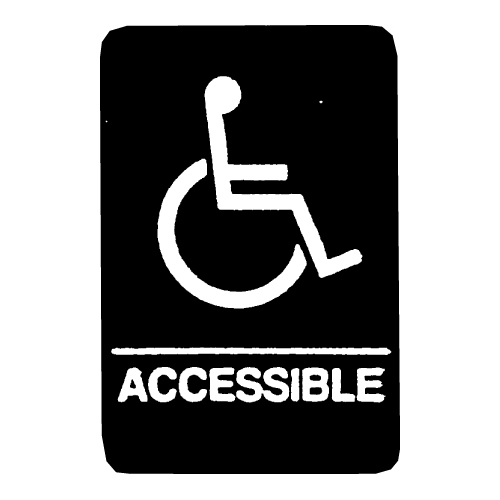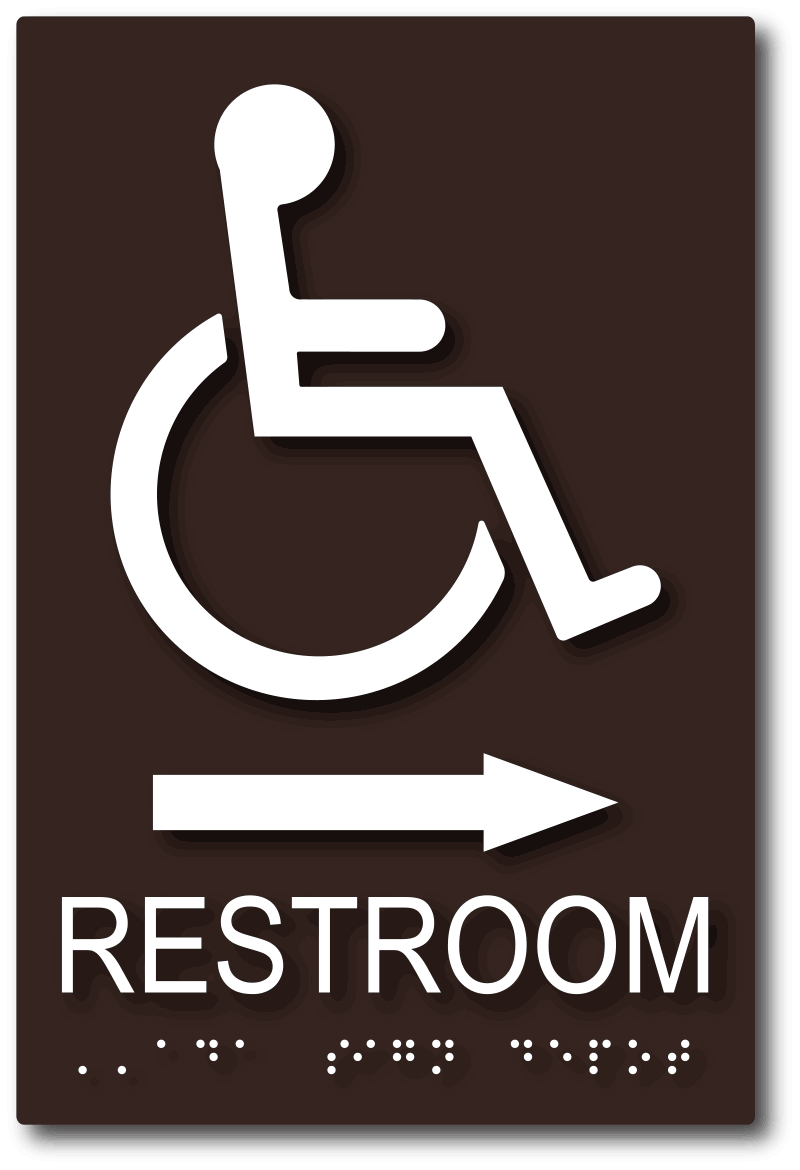The Impact of ADA Signs on Neighborhood Access
The Impact of ADA Signs on Neighborhood Access
Blog Article
Checking Out the Secret Functions of ADA Indications for Enhanced Access
In the world of accessibility, ADA indicators act as quiet yet powerful allies, guaranteeing that spaces are navigable and comprehensive for individuals with disabilities. By integrating Braille and responsive aspects, these indications break obstacles for the aesthetically impaired, while high-contrast color pattern and understandable typefaces accommodate diverse visual demands. Their strategic positioning is not arbitrary but instead a calculated initiative to assist in seamless navigating. Yet, past these functions exists a much deeper narrative concerning the development of inclusivity and the ongoing dedication to producing equitable areas. What more could these indicators represent in our search of global access?
Value of ADA Compliance
Guaranteeing conformity with the Americans with Disabilities Act (ADA) is critical for fostering inclusivity and equivalent accessibility in public spaces and work environments. The ADA, established in 1990, mandates that all public facilities, employers, and transportation solutions suit individuals with specials needs, guaranteeing they enjoy the exact same legal rights and possibilities as others. Compliance with ADA requirements not just meets lawful obligations yet also enhances an organization's track record by showing its dedication to variety and inclusivity.
One of the crucial elements of ADA compliance is the implementation of accessible signs. ADA indicators are created to make sure that individuals with disabilities can conveniently browse with areas and buildings.
In addition, sticking to ADA policies can mitigate the danger of legal effects and prospective fines. Organizations that stop working to follow ADA standards may face penalties or lawsuits, which can be both monetarily troublesome and damaging to their public image. Hence, ADA compliance is integral to promoting an equitable setting for everybody.
Braille and Tactile Components
The consolidation of Braille and tactile elements into ADA signs personifies the principles of accessibility and inclusivity. These functions are essential for people who are aesthetically damaged or blind, enabling them to browse public rooms with higher independence and self-confidence. Braille, a responsive writing system, is crucial in offering created details in a layout that can be conveniently regarded through touch. It is normally put underneath the equivalent message on signs to make certain that people can access the details without visual assistance.
Tactile elements expand beyond Braille and include raised icons and characters. These elements are designed to be noticeable by touch, allowing individuals to identify space numbers, bathrooms, leaves, and other critical areas. The ADA establishes certain standards pertaining to the dimension, spacing, and positioning of these tactile aspects to optimize readability and guarantee consistency across various environments.

High-Contrast Color Design
High-contrast color systems play a crucial role in boosting the presence and readability of ADA signs for individuals with visual problems. These plans are necessary as they maximize the difference in light reflectance in between text and background, making sure that signs are easily noticeable, even from a distance. The Americans with Disabilities Act (ADA) mandates making use of details shade contrasts to suit those with minimal vision, making it an essential aspect of compliance.
The efficiency of high-contrast shades lies in their ability to stand out in numerous lighting problems, including official website dimly lit environments more helpful hints and locations with glow. Usually, dark message on a light background or light text on a dark background is employed to accomplish ideal contrast. Black text on a white or yellow background provides a plain aesthetic difference that assists in quick recognition and comprehension.

Legible Fonts and Text Dimension
When taking into consideration the style of ADA signage, the choice of legible typefaces and proper message size can not be overemphasized. The Americans with Disabilities Act (ADA) mandates that typefaces need to be sans-serif and not italic, oblique, manuscript, highly ornamental, or of unusual kind.
According to ADA guidelines, the minimum message elevation must be 5/8 inch, and it must boost proportionally with watching distance. Consistency in message size adds to a cohesive visual experience, aiding people in browsing atmospheres successfully.
In addition, spacing in between letters and lines is integral to legibility. Adequate spacing protects against characters from showing up crowded, enhancing readability. By adhering to these requirements, developers can significantly improve ease of access, guaranteeing that signs serves its desired objective for all people, despite their visual capacities.
Efficient Positioning Approaches
Strategic placement of ADA signage is crucial for making the most of availability and making sure conformity with lawful criteria. ADA guidelines state that indicators need to be installed at an elevation between 48 to 60 inches from the ground to guarantee they are within the line of this post sight for both standing and seated people.
In addition, signs should be positioned nearby to the lock side of doors to enable very easy recognition before entrance. Consistency in indicator placement throughout a center boosts predictability, reducing complication and boosting overall customer experience.

Conclusion
ADA indicators play a crucial function in promoting ease of access by integrating attributes that resolve the needs of people with impairments. Including Braille and tactile elements makes sure vital information comes to the aesthetically damaged, while high-contrast color pattern and legible sans-serif typefaces enhance presence across numerous lights problems. Effective positioning techniques, such as suitable placing heights and tactical areas, further promote navigation. These aspects jointly promote an inclusive environment, emphasizing the relevance of ADA conformity in ensuring equal accessibility for all.
In the world of access, ADA indicators serve as quiet yet effective allies, making certain that rooms are comprehensive and navigable for people with impairments. The ADA, established in 1990, mandates that all public facilities, employers, and transport services suit people with handicaps, guaranteeing they enjoy the exact same rights and chances as others. ADA Signs. ADA signs are created to make certain that individuals with impairments can conveniently browse with areas and structures. ADA guidelines state that signs ought to be mounted at a height in between 48 to 60 inches from the ground to guarantee they are within the line of view for both standing and seated people.ADA indications play a vital duty in promoting access by incorporating functions that address the needs of individuals with handicaps
Report this page